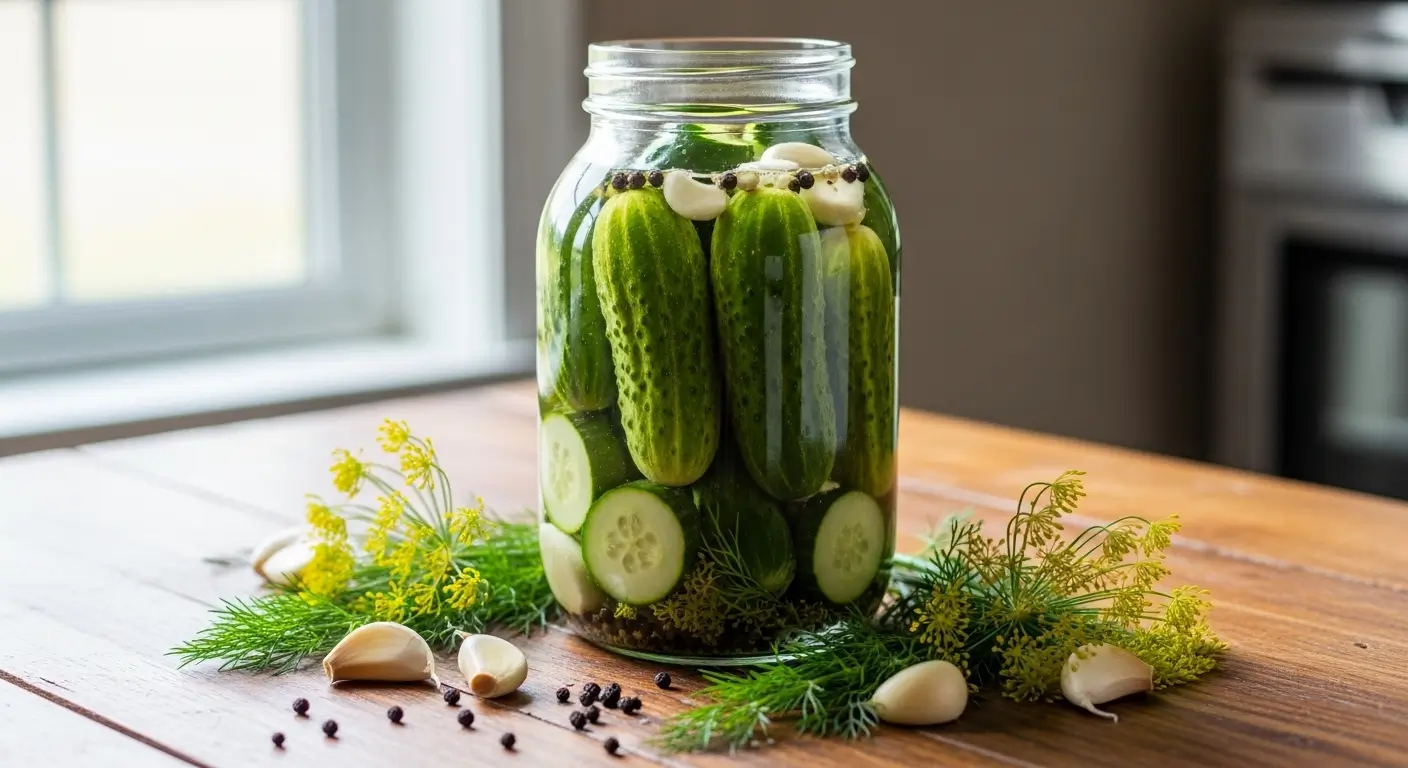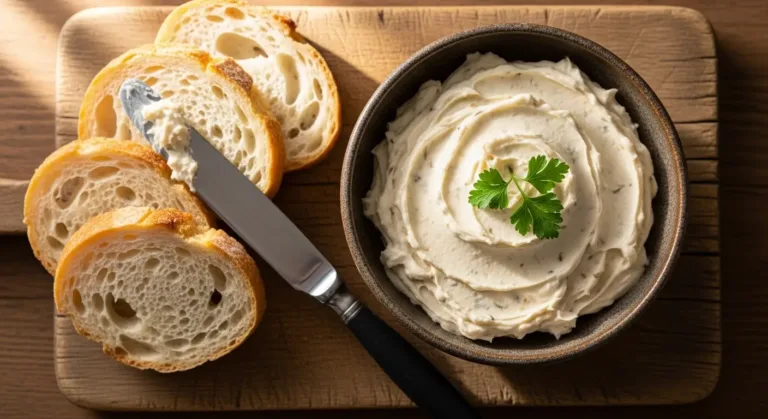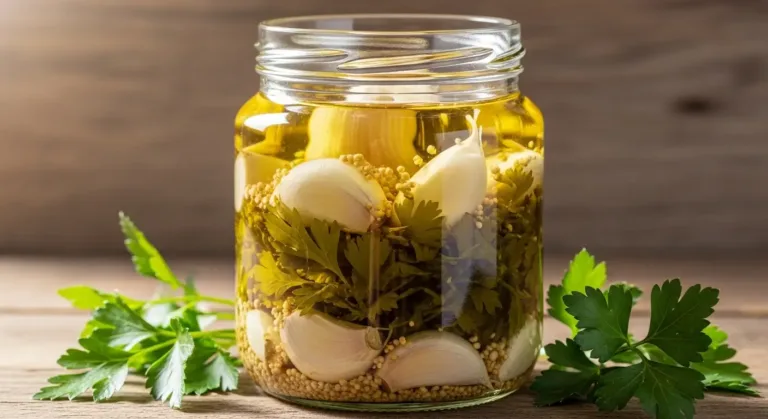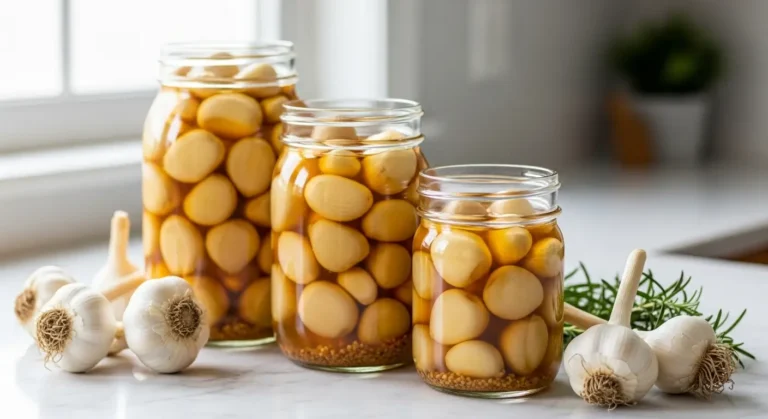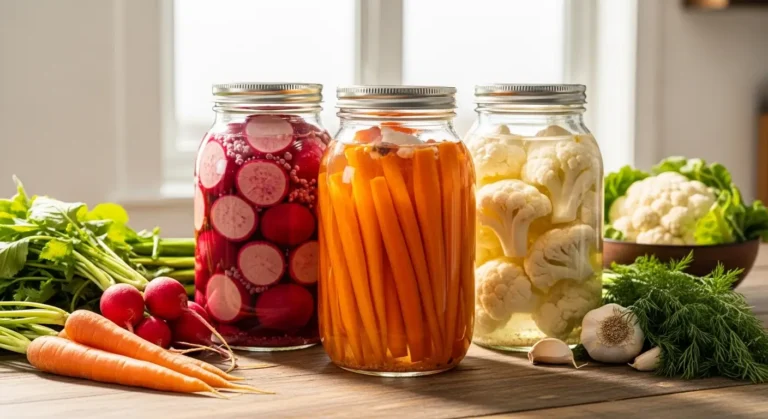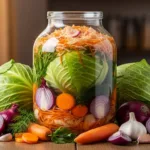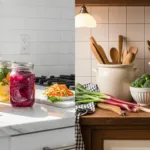So you’re thinking about cucumber fermentation? Honestly, it’s one of the coolest kitchen projects you can tackle, and it’s way easier than you’d think! Home cooks everywhere are ditching those bland store-bought pickles for homemade probiotic goodness through cucumber fermentation. Trust me, once you nail this cucumber fermentation process, you’ll be that friend who brings the amazing pickles to every potluck.
In this guide, I’m going to walk you through everything about cucumber fermentation—from picking the right cukes to solving weird fermentation mysteries. No confusing jargon, I promise. Just straightforward tips so you can master cucumber fermentation and make crispy, tangy, gut-friendly pickles without breaking a sweat. And hey, if you’re into this stuff, definitely check out our Vegetable Fermentation Guide for even more veggie-fermenting adventures.
The Cool Science Behind Cucumber Fermentation (Don’t Worry, It’s Simple!)
So What Exactly Is Fermentation?
Alright, here’s the deal: fermentation is basically nature’s way of making food last longer and taste better. Tiny beneficial bacteria munch on the sugars in your cucumbers and turn them into lactic acid. That’s what gives you that addictive tangy flavor and keeps everything preserved naturally—no sketchy chemicals needed.
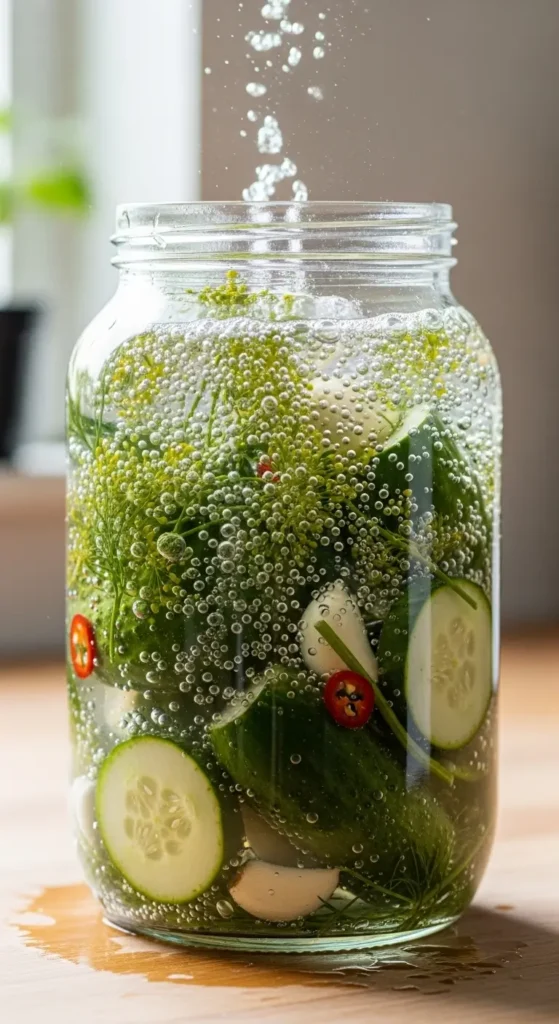
Why Salt Is Your New Best Friend
You can’t skip the salt in cucumber fermentation, friends. It’s literally the bouncer at the club, keeping the bad bacteria out while rolling out the red carpet for lactobacillus (the good guys). These little heroes transform your boring cucumbers into probiotic-packed pickles that’d make your grandma proud.
Most recipes for cucumber fermentation call for regular non-iodized salt mixed with water to create what we call a brine. This salty bath kickstarts the wild fermentation magic while keeping everything crispy and flavorful. Want to dive deeper into wild fermentation? We’ve got a whole comparison guide for you: Fermentation Guide: Pedro vs. Wild.
Discover great ideas likes: Fermented Garlic Safety
Picking Your Ingredients (This Actually Matters!)
The Best Cucumbers for the Job
Look, not all cucumbers are created equal when it comes to cucumber fermentation. You’ll want small, fresh ones—Kirby and Persian varieties are absolute rockstars because they stay crunchy. Whatever you do, avoid those shiny waxed cucumbers from the supermarket. That waxy coating literally blocks fermentation, and nobody wants that.
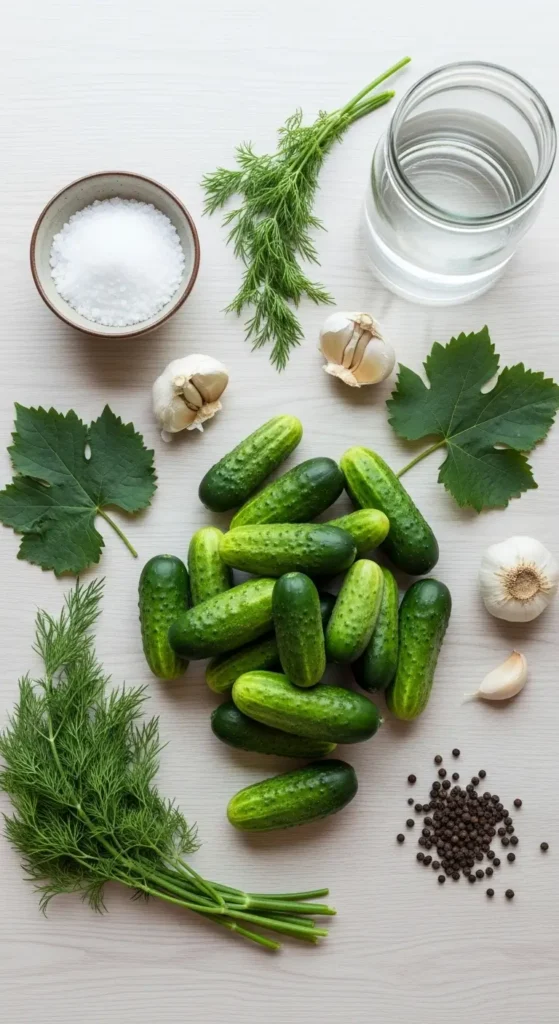
Water, Salt, and All the Tasty Add-Ins
Here’s what you need: filtered or spring water (tap water’s chlorine can mess things up) and either kosher salt or pickling salt. As for flavoring? Go wild! Dill, garlic, and bay leaves are classics that play really nicely with the fermentation process.
Oh, and if you’re planning to use garlic, pop over to our Fermented Garlic Safety Guide to make sure you’re doing it right.
Don’t miss our: The Complete Guide to Vegetable Fermentation
Let’s Actually Make These Pickles!
Getting Your Cucumbers Ready
First things first—give those cucumbers a good wash and trim off the ends. And this is super important for successful cucumber fermentation: cut off the blossom end (the opposite side from where the stem was). Those blossom ends have enzymes that can make things mushy and bitter, and we definitely don’t want that.
Mixing the Brine and Packing Your Jars
Mix about 2–3 tablespoons of salt into each quart (that’s 4 cups) of water. Pretty straightforward, right? Then grab some clean jars, layer in your cucumbers with whatever spices you’re using, and pour that brine over everything until it’s all covered. You’ll want to weigh everything down with fermentation stones or even just a food-safe bag filled with water so nothing floats to the top.
For a complete step-by-step with photos and everything, check out our Probiotic Pickles Recipe.
Gear You’ll Need (Nothing Too Fancy)
Picking the Right Container
Glass jars are your best bet—mason jars work perfectly for cucumber fermentation. Ceramic crocks are great too if you’re feeling fancy, or you can grab a specialized fermenter if you’re getting serious about this. Just stay away from metal and plastic containers.
Weights, Lids, and Other Handy Tools
The secret to great ferments? Keeping everything underwater and away from oxygen. You can use special airlock lids or just “burp” regular jars once a day by opening them to let out the gas. And definitely grab some fermentation weights to keep those cucumbers submerged—it’s the difference between crunchy pickles and disappointing mush.
Curious about different fermentation styles? Check out how methods compare in our guide: Fermentation Methods Compared: Pedro vs. Urban.
How Long Do You Actually Wait?
The Typical Timeline
At normal room temperature (somewhere between 65 and 72°F), you’re looking at about 5–12 days for cucumber fermentation. If it’s cooler, things slow down, but you’ll get even crispier results and more complex flavors. Worth the wait!
What Makes Fermentation Go Faster or Slower?
Temperature’s the big one, but salt levels and even the type of cucumber you use can speed things up or slow them down. My advice? Start tasting around day 5 and keep going until you hit your perfect level of tang.
For more detailed timing advice, our Vegetable Fermentation Guide has got you covered.
Troubleshooting When Things Get Weird
Dealing with Mold and Spoilage
Keep everything submerged and check on your jars every day. If you see white scum floating on top, don’t panic—that’s just harmless yeast, and you can skim it off. But if you spot fuzzy mold? Yeah, that batch is toast. Better luck next time!
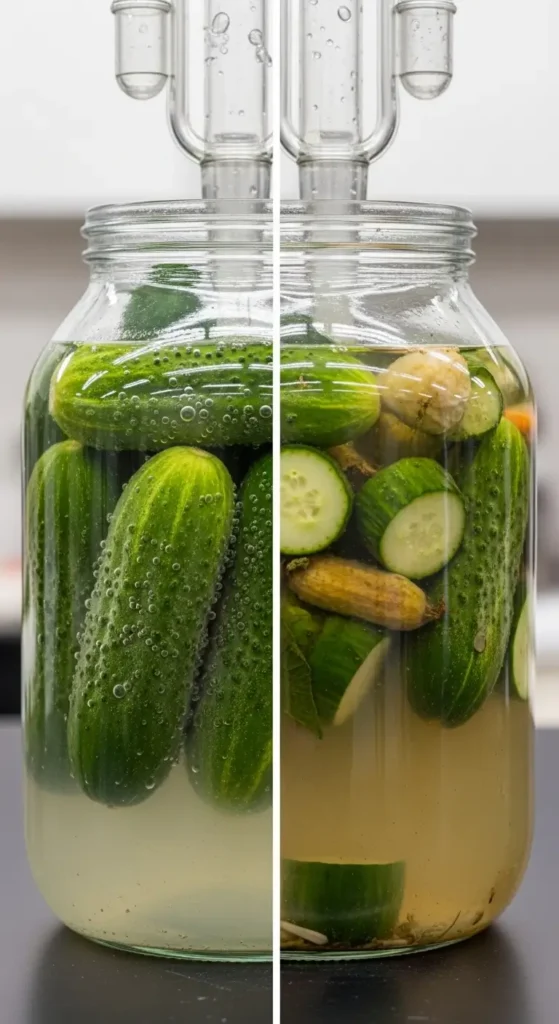
How to Know If Your Pickles Are Safe
Good fermented cucumbers smell mildly sour and fresh—kinda like a deli pickle. They should never smell rotten or funky. Cloudy brine is totally normal and actually a good sign! But if your cucumbers are slimy or weird colors, don’t risk it.
Want more safety tips? Our Fermented Garlic Safety Guide has tons of helpful info.
Looking for inspiration? Try Sauerkraut Juice
The Quest for Maximum Crunch
Keeping That Satisfying Snap
Here’s the crunch manifesto: always trim those blossom ends, use the freshest cucumbers you can find, and keep everything cool. Oh, and here’s a pro tip—toss in some grape leaves, black tea, or bay leaves. The natural tannins in these help your pickles stay crispy instead of going soft.
Old-School Tricks That Actually Work
Just one grape leaf or a tiny pinch of loose black tea per jar does wonders. These traditional methods have been around forever for a reason—they work without messing with the flavor at all.
Looking for more texture-saving tricks? Check out our Fermented Cabbage Blends Recipe and Guide for inspiration from other crunchy ferments.
What to Do with Your Awesome Pickles
Storing and Serving These Bad Boys
Once your cucumbers hit that perfect level of tang, stick them in the fridge. They’ll last for months and keep developing more flavor over time. Eat them sliced on sandwiches, chopped up in salads, or honestly just grab them straight from the jar as a snack. No judgment.
Getting Creative with Your Fermented Cucumbers
These pickles are insanely versatile! Pair them with grilled chicken, toss them in tuna salad, or add them to Mediterranean grain bowls. You can even blend them with yogurt and herbs for a probiotic dip or throw them on tacos for extra crunch and zing.
For more fermented veggie inspiration, don’t miss our Kimchi Variations guide.
| Step | Details |
|---|---|
| Select cucumbers | Choose fresh, unwaxed Kirby or Persian |
| Prepare brine | Use 2–3 tbsp salt per quart (4 cups) water |
| Pack jars | Layer cucumbers & spices, pour brine |
| Weight and cover | Add grape leaves/tea, submerge completely |
| Monitor and taste | Check daily, taste after day 5 |
| Store | Refrigerate after desired tang achieved |
Cucumber Fermentation Progress Chart
| Day | Brine Color | Aroma | Texture | Recommended Action |
|---|---|---|---|---|
| 1 | Clear | Mild cucumber | Very crisp | Start fermentation |
| 3 | Slightly cloudy | Slight tang | Crisp | Weigh down if needed |
| 5 | Cloudy | Tangy/sour | Crunchy | Taste for preference |
| 8 | Cloudy | Sharp/tangy | Tender-crisp | Move to fridge if ready |
| 12 | Cloudy | Strong tangy | Less crisp | Refrigerate for storage |
FAQs
Want even more answers? Swing by our Probiotic Pickles Recipe for all the details.
Conclusion
And there you have it! You now know everything you need to safely ferment cucumbers at home, fix any problems that pop up, and keep them perfectly crunchy. Don’t be afraid to experiment with different flavors in your cucumber fermentation projects, keep an eye on your ferments, and tweak things until you nail your perfect recipe. Your kitchen’s about to become a fermenting playground!
Ready for more? Try our wild fermentation guide or jump straight into making probiotic pickles. Happy fermenting, friend!
Print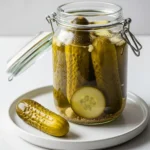
Your Friendly Guide to Cucumber Fermentation
- Total Time: 5–12 days
- Yield: 1 quart jar 1x
- Diet: Vegan
Description
A simple, foolproof guide to cucumber fermentation for homemade probiotic pickles—crispy, tangy, and full of gut-friendly goodness.
Ingredients
- Fresh Kirby or Persian cucumbers (unwaxed)
- 2–3 tablespoons kosher or pickling salt per quart (4 cups) water
- Filtered or spring water
- Dill, garlic, bay leaves (optional)
- Grape leaves or loose black tea (for crunch)
Instructions
- Wash cucumbers thoroughly and trim off both ends, especially the blossom end to prevent softening.
- Mix 2–3 tablespoons of salt per quart of filtered or spring water to make your brine.
- Layer cucumbers and spices in clean glass jars.
- Pour brine over cucumbers until fully submerged.
- Weigh down cucumbers with fermentation weights or a food-safe water bag to keep them underwater.
- Cover jars loosely or use airlock lids to allow gas release.
- Let ferment at room temperature (65–72°F) for 5–12 days.
- Taste daily after day 5 until your desired tang is achieved.
- Once ready, refrigerate jars to slow fermentation and preserve crunch.
Notes
For the best crunch, use fresh cucumbers, trim blossom ends, keep everything submerged, and add grape or bay leaves. Cloudy brine is normal—mold or foul odors mean discard the batch.
- Prep Time: 20 minutes
- Cook Time: 0 minutes
- Category: Fermentation
- Method: No-Cook
- Cuisine: Homemade
Nutrition
- Serving Size: 1 pickle spear
- Calories: 5
- Sugar: 0g
- Sodium: 300mg
- Fat: 0g
- Saturated Fat: 0g
- Unsaturated Fat: 0g
- Trans Fat: 0g
- Carbohydrates: 1g
- Fiber: 0g
- Protein: 0g
- Cholesterol: 0mg
Keywords: cucumber fermentation, fermented cucumbers, probiotic pickles, homemade pickles

